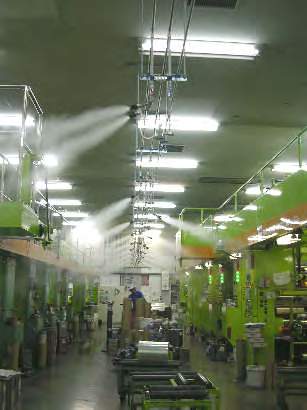Improve quality, productivity and safety in printing factories with a humidifier

3 Case Studies of humidification in printing factory in Japan
At IKEUCHI, we have over 20 years of proven experience in the printing industry, solving divers problems issued from static charge and low humidity. For each type of printing method/factory and problem, we customize the suitable humidification system that is operational all year round.
Having a low humidity level in a printing factory can cause:
- Jams at conveyors;
- Insufficient folding precision;
- Ink striation from doctor and/or plate cylinder, and feathering;
- Paper feed splicing defects;
- Blurry printing results;
- Coater/laminator fires;
- etc.
All these issues have a direct impact on the company’s productivity, product quality, and safety towards its workers.
As “The Fog Engineers”, IKEUCHI used our knowledge about optimal humidification to provide a two in one solution, tackling both the control of the humidity level and prevention of static charge at the same time with one device.
Here are 3 examples of case studies about how increasing the level of humidity helped each of these printing factories to become more operational.
- Toyo Shigyo Printing Co.: Better quality and productivity in sheet-fed printing
- Yomiuri Newspaper Tosho Printing: No more downtime in newspaper rotary press
- Nissha Printing Co. Ltd.: Fire prevention from static-electricity in gravure printing
Case 1 – Improving quality and productivity in sheet-fed printing
Toyo Shigyo Printing Co. is a sheet-fed printing factory that prints a range of products from school albums to business cards. Every year, the plant faced the same decrease in productivity in winter time due to the low level of humidity causing inaccurate and unreliable printing. Having a low humidity level has a direct impact on the paper sizing becoming inaccurate and on the generation of static charge which causes double feeding, machine malfunctioning and by consequence press shutdowns. In winter time, Toyo Shigyo would reduce their schedule and compensate for it by changing procedures and increasing overtime labor. But because they had deadlines that couldn’t be postponed, the changes in production process wasn’t the best solution to stay productive.
When printing double-sided pages, they would normally print one side of the paper one day and the other side the next. But because low humidity led to changes in paper size overnight, it ultimately led to an inferior end product. As a result, the plant had to print both sides on the same day whenever possible.
In addition, in order to curb problems brought on by static electricity (which was especially a problem where large quantities of thin sheets were concerned) the plant was forced to enact special procedures, such as reducing the printing speed, or juggling the job schedule by moving up jobs not as affected by static electricity as thin sheets, and putting off tougher jobs until humidity levels increased.
All of these changes in production processes put additional stress on the production schedule and workers. The company’s staff complained, saying that operators are able to somehow work out the irregularities in the delivery unit, but that if the paper is stuck at the feeder, so were they. Therefore, they needed an efficient solution that allowed them to work all year round on a defined schedule based on orders and not the level of humidity in the factory.
Problems to be solved:
- Reducing inaccuracies in sizing and poor registration, which necessitates reprints.
- Reducing double feeding at the feeder and substandard stacking at delivery unit.
IKEUCHI’s Solution:
The AirAKI® system is based on our iconic Dy Fog humidifier AKIMist® “E” that sprays a non-wetting fog above machines, increasing significantly the humidity level indoors. The water droplets are so small that they don’t break and efficiently increase the relative humidity of a room without wetting the objects in the surrounding.
After purchasing the AirAKI® system, the plant was able to greatly reduce sudden drops in humidity during the winter.
Thus, it tackled both paper quality issues (paper curling) and static charge issues (double feeding) at the same time. The printing process was able to run more smoothly and printing jobs could be run properly on schedule, reducing the need for sudden production schedule changes and overtime work.
Furthermore flapping and folding caused by static electricity were drastically reduced, and the time it took to load paper into the sheet-fed printer was cut by about 10%.
In the winter, plants without humidification become quite dry due to the heating system. Dryness becomes even more irritating because of the ink vapors, paper particles, and powders. This also became an issue concerning the respiratory health of the people who work in these kinds of plants.
Thanks to the humidification provided by the AirAKI® system, the number of work absences due to illness was cut nearly in half, which also have an impact on the reduction of sudden schedule changes and overtime work.
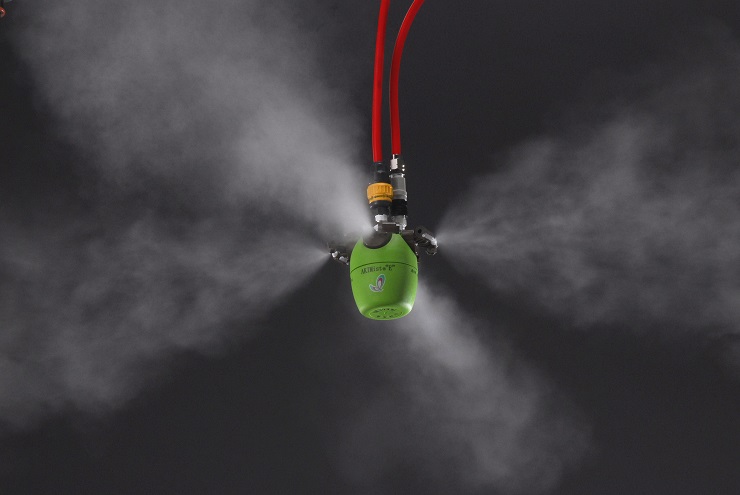
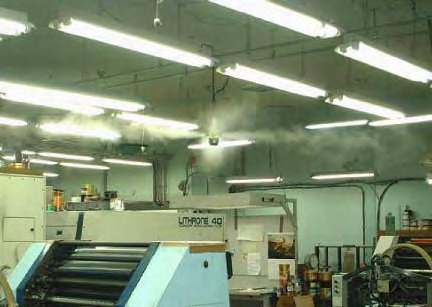
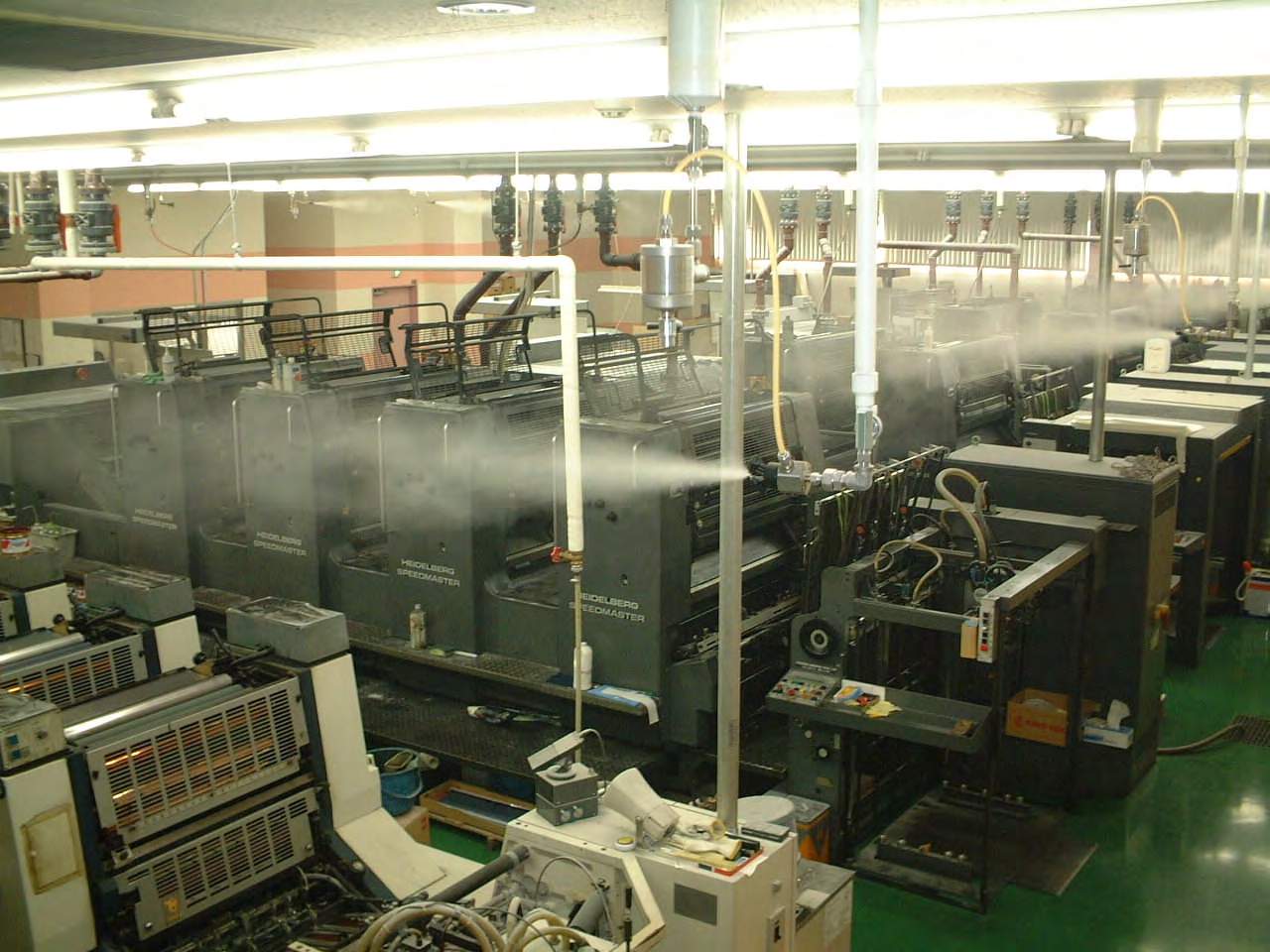
Case 2 – Eliminating downtime in newspaper rotary press
Yomiuri Newspaper is the most popular newspaper with the highest circulation in Japan. The Kyoto plant, where the newspaper is print, has the most important requirement to completed printing at maximum speed without any stoppages. Every step must be taken to ensure that no problems occur in the printing process in order to deliver the evening paper in the following day.
One of the causes of press stoppages is trouble with paper feed continuity. Newspaper rotary presses do not stop when a roll runs out at the feeder. Without stopping the press, the next roll is then connected by the paster using a piece of double-sided tape, which allows the press to print continuously. One problem with this system, however, is the weakening of the paster’s tape adhesion due to dryness, which leads problems in paper connectivity when the two paper rolls do not firmly stick to each other.
Japanese newspaper printing presses are of the “tower” type, with the supply paper feeding from a basement where there is a paper storage room. On the next floor up, the printing press takes in feed paper from below and prints out from the top. Because of the vertical system, if problems in paper connectivity arise, there is a significant amount of time lost in getting the press ready again. In addition, the printing done during this resetting cannot be sold, and is thrown out as waste.
Problems to be solved:
- Paper feeding troubles due to drying of paster component.
- Web tearing by retaining moisture content, thereby maintaining paper’s strength.
IKEUCHI’s Solution:
Dry Fog humidifier AKIMist® “E”
AKIMist® was installed and Dry Fog was sprayed directly using Ikeuchi’s unique spot humidification at the paper feed roll to counteract dryness at the paster area and prevent press shutdowns. As a result, they prevented paper connectivity trouble and achieved zero machine stoppage.
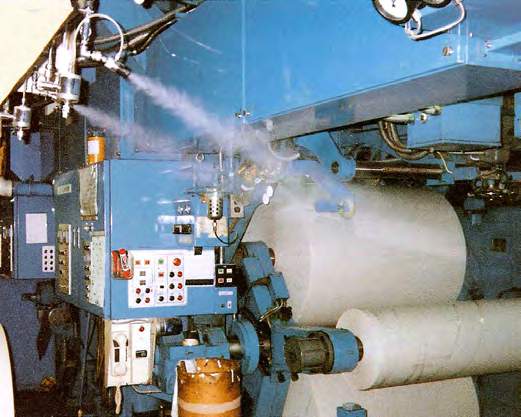
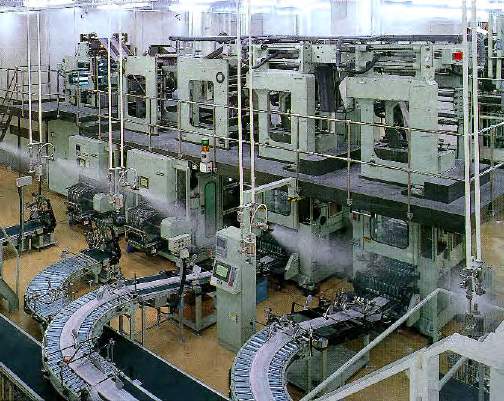
Case 3 – Preventing fire generated from static-electricity in gravure printing
Nitec Industries prints transfer film for printing on mobile phones and computers. It is a subsidiary of Nissha Printing Co. Ltd.
Each winter, static electricity buildup near the ink units leads to intermittent problems with sparks and small fires. Fortunately, there had not yet been any major fires, but should a fire break out and destroy the plants’ seven presses, such a fire could be disastrous for the company. This threat drew the attention of the local fire department and Nitec Industries were pressed to take measures to prevent such a risk from becoming reality.
Problem to be solved:
- Risk of fire destroying the machines and endangering the workers’s safety
IKEUCHI’s Solution:
Humidity releases the static charge from plastic film and prevents static spark and small fires. By installing the Dry Fog humidifier AKIMist®, the relative humidity level is kept exactly between roll units with the unique solution of ‘Spot Humidification’.
In order to ease the fire department’s concerns, Nitec demonstrated the AKIMist® system to the firefighters. It was set up with two nozzles at each ink unit space and the increase in humidity and reduction of static electricity were measured. As the relative humidity increased from 35% to 50%, the static electric charge was reduced from 20kV to 4kV, or 1/5 of its previous value. The firefighters were then convinced that this would efficiently curb the danger of a large fire breaking out.
